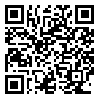BibTeX | RIS | EndNote | Medlars | ProCite | Reference Manager | RefWorks
Send citation to:
URL: http://rjms.iums.ac.ir/article-1-495-en.html

 , A.A Vafaee
, A.A Vafaee 
 , A RashidiPoor
, A RashidiPoor 
 , A.A Taherian
, A.A Taherian 
 , M Jarrahi
, M Jarrahi 
 , M Emami Abarghoee
, M Emami Abarghoee 
 , H Sadeghi
, H Sadeghi 

Background & Objective: Melissa officinalis(MO) is a herb which grows in different parts of Iran. In previous studies, it was reported that 10% ethanolic extract of the aerial parts of MO, i.e. leaf and stem, could bring about antinociceptive, anticonvulsive, and sedative effects on rats. This study was designed to evaluate anxiolytic effects of different doses of the aqueous decoction extract of MO and also the role of opioid receptors.
Method: The subjects of this study were ninety-three male mice whose weights ranged from 25-30gr. Different doses of the extract(5, 10, 25, 50mg/kg-IP) were injected to four separated groups of ten(case groups) and water(10ml/kg-IP) was injected to the control group including 10 mice. A pilot study was also carried out on 15 mice. In order to evaluate the role of opioid receptors on anxiolytic effects of the aqueous decoction extract of MO, the rest of the subjects were divided into 4 groups including seven each. Then Naloxone(2mg/kg) and the extract of MO(5 mg/kg) were injected to them. To increase their activity and curiosity, animals were put inside a box with black walls for 5 min. Then animals were transfered to the elevated plus maze at adjusted intervals and their anxiety reactions including enterance numbers and time spent in open arm were recorded in 5 min.
Results: Results indicated that injection of 5mg of the extract reduced anxiety reactions. In comparison to control group, case group animals had both more numbers of entrance and more time spent in open arm(P<0.01). However, higher doses of MO reduced entrance numbers and also time spent in open arm, that is, they had hypnotic effects. Naloxone reduced anxiolytic effects of low doses of Melissa officinalis extract(5mg/kg).
Conclusion: It is concluded that the aqueous extract of MO plays an important role in fear, anxiety and drowsiness so that the lowest dose(5mg/kg) produces anxiolytic effects and higher doses exert hypnotic ones. It is also probable that it works through opioid receptors.



